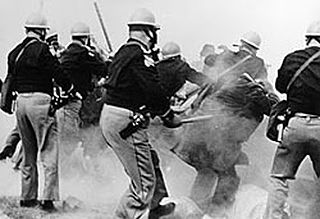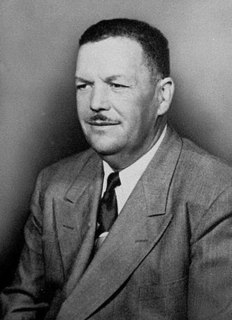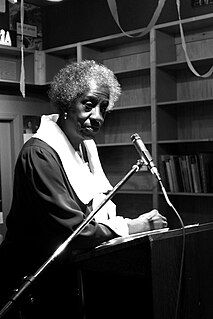
Jamil Abdullah Al-Amin, formerly known as H. Rap Brown, was the fifth chairman of the Student Nonviolent Coordinating Committee in the 1960s, and during a short-lived alliance between SNCC and the Black Panther Party, he served as their minister of justice.

The Student Nonviolent Coordinating Committee was the principal channel of student commitment in the United States to the Civil Rights Movement during the 1960s. Emerging in 1960 from the student-led sit-ins at segregated lunch counters in Greensboro, North Carolina and Nashville, Tennessee, the Committee sought to coordinate and assist direct-action challenges to the civic segregation and political exclusion of African-Americans. From 1962, with the support of the Voter Education Project, SNCC committed to the registration and mobilization of black voters in the Deep South. Affiliates such as the Mississippi Freedom Democratic Party and the Lowndes County Freedom Organization in Alabama increased dramatically the pressure on federal and state government to enforce constitutional protections. But by the mid-1960s the measured nature of the gains made, and the violence with which they were resisted, were generating dissent from the group's principles of non-violence, of white participation in the movement, and of field-driven, as opposed to national-office, leadership and direction. At the same time organizers were being lost to a de-segregating Democratic Party and to federally-funded anti-poverty programs. Following an aborted merger with the Black Panther Party in 1968, SNCC effectively dissolved. SNCC is nonetheless credited in its brief existence with breaking down barriers, both institutional and psychological, to the empowerment of African-American communities.
The Mississippi Summer Project, or the Freedom Summer, was a volunteer campaign in the United States launched in June 1964 to attempt to register as many African-American voters as possible in Mississippi. Blacks had been cut off from voting since the turn of the century due to barriers to voter registration and other laws. The project also set up dozens of Freedom Schools, Freedom Houses, and community centers in small towns throughout Mississippi to aid the local black population.

The Selma to Montgomery marches were three protest marches, held in 1965, along the 54-mile (87 km) highway from Selma, Alabama, to the state capital of Montgomery. The marches were organized by nonviolent activists to demonstrate the desire of African-American citizens to exercise their constitutional right to vote, in defiance of segregationist repression; they were part of a broader voting rights movement underway in Selma and throughout the American South. By highlighting racial injustice, they contributed to passage that year of the Voting Rights Act, a landmark federal achievement of the civil rights movement.
The March Against Fear was a major 1966 demonstration in the Civil Rights Movement in the South. Activist James Meredith launched the event on June 5, 1966, intending to make a solitary walk from Memphis, Tennessee, to Jackson, Mississippi, a distance of 220 miles, to counter the continuing racism in the Mississippi Delta after passage of federal civil rights legislation in the previous two years and to encourage African Americans in the state to register to vote. He invited only individual black men to join him and did not want it to be a large media event dominated by major civil rights organizations.
Mary Elizabeth King is a professor of Peace and Conflict Studies at the United Nations affiliated University for Peace, a political scientist, and author of several publications. She is a graduate of Ohio Wesleyan University and has a doctorate in international politics from Aberystwyth University. She is also a Fellow of the Rothermere American Institute and a distinguished Scholar at the American University Center for Global Peace in Washington D.C.

James Forman was a prominent African-American leader in the civil rights movement. He was active in the Student Nonviolent Coordinating Committee (SNCC), the Black Panther Party, and the League of Revolutionary Black Workers. As the executive secretary of SNCC from 1961 to 1966, Forman played a significant role in the freedom rides, the Albany movement, the Birmingham campaign, and the Selma to Montgomery marches.

Robert Parris Moses is an American educator and civil rights activist, known for his work as a leader of the Student Nonviolent Coordinating Committee on voter education and registration in Mississippi during the Civil Rights Movement, and his co-founding of the Mississippi Freedom Democratic Party. He is a graduate of Hamilton College and completed a master's in philosophy at Harvard University.
Gloria Richardson Dandridge is best known as the leader of the Cambridge Movement, a civil rights struggle in the early 1960s in Cambridge, Maryland, on the Eastern Shore. Recognized as a major figure in the Civil Rights Movement at the time, she was one of the signatories to "The Treaty of Cambridge", signed in July 1963 with Attorney General Robert F. Kennedy, and state and local officials after the riot the month before.
The Council of Federated Organizations (COFO) was a coalition of the major Civil Rights Movement organizations operating in Mississippi. COFO was formed in 1961 to coordinate and unite voter registration and other civil rights activities in the state and oversee the distribution of funds from the Voter Education Project. It was instrumental in forming the Mississippi Freedom Democratic Party. COFO member organizations included the National Association for the Advancement of Colored People.

Cleveland Sellers, Jr. was born on November 8, 1944. He is an American educator and veteran civil rights activist.

Vernon Ferdinand Dahmer, Sr. was a leader with the Civil Rights Movement and president of the Forrest County chapter of the NAACP in Hattiesburg, Mississippi. He was murdered by the White Knights of the Ku Klux Klan for his work on recruiting African Americans to vote.

Unita Zelma Blackwell was an American civil rights activist who was the first African-American woman to be elected mayor in the U.S. state of Mississippi. Blackwell was a project director for the Student Nonviolent Coordinating Committee (SNCC) and helped organize voter drives for African Americans across Mississippi. She was also a founder of the US China Peoples Friendship Association, a group dedicated to promoting cultural exchange between the United States and China. Barefootin', Blackwell's autobiography, published in 2006, charts her activism.

Charles Sherrod was born in Surry, Virginia and was raised by his Baptist grandmother. When he was a young boy he sang in a choir and attended Sunday school at a Baptist church. When he was older he became a preacher at Mount Olivet Baptist Church where he often preached to children. Sherrod is not only a preacher, but an activist. Charles Sherrod first took part in the Civil Rights Movement after the Supreme Court desegregated schools in the Brown v. Board of Education case. In 1954, Sherrod first participated in sit-ins at white churches with the goal to desegregate them. He was a key member and organizer of the Student Nonviolent Coordinating Committee (SNCC) during the Civil Rights Movement. He became the first SNCC field secretary and SNCC director of southwest Georgia. His leadership there led to the Albany Movement. He also participated in the Selma Voting Rights Movement and in many other arenas of the 1960s movement era. However, Sherrod's activism continued throughout his life through the Southwest Georgia Project for Community Education (SWGAP), New Communities, and as an Albany City Council Member. He is married to former U.S. Department of Agriculture official Shirley Sherrod, who assisted with the Albany Movement and with SWGAP. Together they had two children.
Hollis Watkins is an activist who was part of the Civil Rights Movement activities in the state of Mississippi during the 1960s. He became a member and organizer with the Student Nonviolent Coordinating Committee (SNCC) in 1961, was a county organizer for 1964's "Freedom Summer", and assisted the efforts of the Mississippi Freedom Democratic Party to unseat the regular Mississippi delegation from their chairs at the 1964 Democratic Party national convention in Atlantic City. He founded Southern Echo, a group that gives support to other grass-roots organizations in Mississippi. He also is a founder of the Mississippi Veterans of the Civil Rights Movement.
Fay D. Bellamy Powell was an African-American civil rights activist.

Samuel Leamon Younge Jr. was a civil rights and voting rights activist who was murdered for trying to desegregate a "whites only" restroom. Younge was an enlisted service member in the United States Navy, where he served for two years before being medically discharged. Younge was an active member of the Student Nonviolent Coordinating Committee (SNCC) and a leader of the Tuskegee Institute Advancement League.

Timothy Lionel Jenkins is an American social and civil rights activist, attorney, educator, and former business and government executive. In the 1960s, he was a co-founder and leader of the Student Nonviolent Coordinating Committee (SNCC) as well as the National Conference of Black Lawyers (NCBL).
Sandra Cason "Casey" Hayden, was an American radical student activist and civil rights worker in the 1960s. Recognized for her defense of direct action in the struggle against racial segregation, in 1960 she was an early recruit to Students for a Democratic Society (SDS). With Student Nonviolent Coordinating Committee (SNCC) in Mississippi Hayden was a strategist and organizer for the 1964 Freedom Summer. In the internal discussion that followed its uncertain outcome, she clashed with the SNCC national executive. Hayden's vision was of a "radically democratic" movement driven by organizers in the field. In defending grassroots organization she believed she was also advocating for the voice of women. In "Sex and Caste", a reworking of an internal memo they had drafted with other SNCC women, Hayden and Mary King drew "parallels" with the experience of African-Americans to suggest that women are "caught up in a common-law caste system that operates, sometimes subtly, forcing them to work around or outside hierarchical structures of power." Since regarded as a bridge connecting civil rights to women's liberation, Hayden describes its publication as her "last action as a movement activist." In the decades since, she has continued to acknowledge the civil-rights struggle of the era as the forerunner for women, and for all those, who have taken up "the idea of organising for themselves."
The Cambridge movement was an American social movement in Dorchester County, Maryland, led by Gloria Richardson and the Cambridge Nonviolent Action Committee. Protests continued from late 1961 to the summer of 1964. The movement led to the desegregation of all schools, recreational areas, and hospitals in Maryland and the longest period of martial law within the United States since 1877. Many cite it as the birth of the Black Power movement.














